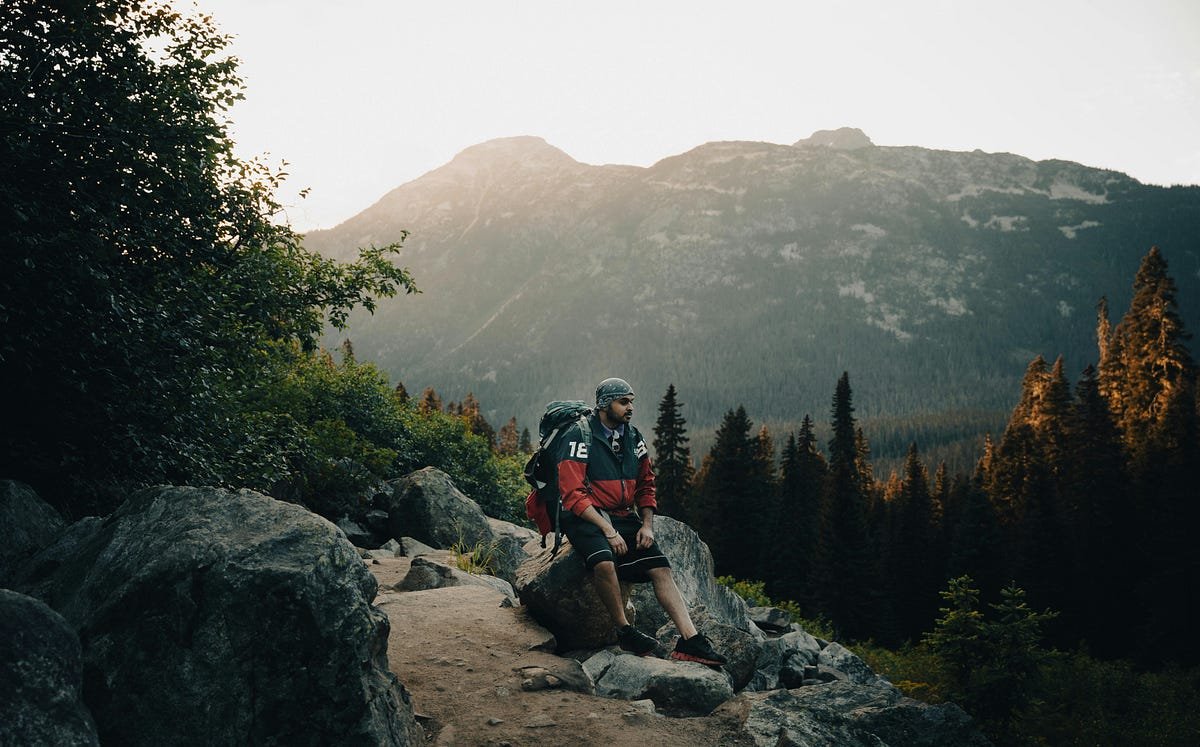The Day My Cheap Gear Nearly Ended My Hiking Dreams (And How I Found Redemption) | by Nature Journaling | Jul, 2025

The rain started at 2 AM on my third night in the Cascade Mountains. Not the gentle Pacific Northwest drizzle I’d grown accustomed to, but a proper deluge that seemed to mock my overconfidence. As I lay in my $39 “waterproof” tent, feeling the first drops of cold water seep through what I would later learn was poorly sealed fabric, I realized I was about to learn one of hiking’s most expensive lessons the hard way.
Six months earlier, I had caught the hiking bug after watching countless YouTube videos of thru-hikers conquering epic trails. Like many beginners, I was eager to hit the trails but hesitant to invest in expensive gear. “How hard could it be?” I thought, browsing Amazon for the cheapest backpack, tent, and sleeping bag I could find. After all, I reasoned, gear is just gear — it’s the adventure that matters, right?
“Sometimes the most valuable lessons come wrapped in the most uncomfortable packages. That night in the Cascades taught me that quality gear isn’t about luxury — it’s about safety, comfort, and the confidence to truly enjoy the wilderness.”
My bargain-hunting approach seemed vindicated during my first few day hikes. The 50-liter backpack held my essentials, the tent stayed dry during a brief shower, and the sleeping bag kept me warm enough on mild nights. I felt smugly satisfied with my thriftiness, convinced that expensive outdoor brands were just capitalizing on naive consumers willing to pay premium prices for fancy logos.
But that stormy night changed everything. As water steadily dripped onto my supposedly “4-season” sleeping bag, transforming the synthetic filling into cold, wet clumps, I found myself shivering uncontrollably in 40-degree temperatures. The zipper on my backpack had jammed earlier that day, forcing me to cut it open with my knife to access my food. My “lightweight” stove had sputtered out twice while trying to boil water for a desperately needed hot meal.
Proper gear organization and quality equipment make the difference between adventure and survival
By dawn, I was hypothermic, exhausted, and completely demoralized. The rescue that followed wasn’t dramatic — just a humbling extraction by two experienced hikers who found me the next morning, shivering in my failing shelter. They didn’t lecture me about my gear choices; they didn’t need to. The evidence was soaking wet and spread around my campsite like a yard sale of poor decisions.
That experience could have ended my hiking journey before it truly began. Instead, it became the catalyst for a complete transformation in how I approached outdoor adventures. Over the following weeks, as I recovered both physically and mentally, I began researching gear with the dedication of a graduate student. I learned about denier ratings in tent fabrics, the importance of down vs. synthetic insulation, and why pack fit matters more than capacity.
The revelation wasn’t just about spending more money — it was about understanding that quality outdoor gear represents decades of innovation, testing, and refinement by people who stake their lives on reliable equipment. When you’re miles from civilization, your gear isn’t just stuff you carry; it becomes your shelter, your safety net, and often your lifeline.
My redemption came six months later, returning to the same trail with completely different equipment. This time, I carried a properly fitted backpack that distributed weight evenly across my hips, a tent with bomber construction that shrugged off another Pacific Northwest downpour, and a sleeping system that kept me comfortable in conditions that would have previously sent me into hypothermic shock.
The difference wasn’t just in comfort — it was psychological. With reliable gear, I could focus on the reasons I fell in love with hiking in the first place: the way morning mist rises from alpine lakes, the satisfaction of reaching a challenging summit, the profound peace that comes from disconnecting from digital noise and reconnecting with natural rhythms.
Quality gear gives you the confidence to focus on the beauty around you rather than worrying about equipment failures
Today, three years and dozens of adventures later, I understand that gear selection is about much more than avoiding catastrophic failures. It’s about optimizing your experience so that minor discomforts don’t compound into major problems. It’s about carrying equipment that works seamlessly together as a system, each piece chosen for its specific role in keeping you safe, comfortable, and capable of enjoying the wilderness.
I’ve learned to appreciate the engineering that goes into a sleeping pad with an R-value of 4.2, the difference between 20D and 70D nylon fabrics, and why experienced hikers obsess over pack weight distribution. These details matter because they’re the difference between struggling through an outdoor experience and truly thriving in natural environments.
The outdoor industry has evolved remarkably in recent years, with manufacturers creating gear that’s simultaneously lighter, more durable, and more functional than ever before. Modern backpacking equipment represents the culmination of decades of innovation by people who understand that reliable gear enables adventure rather than hindering it.
For anyone standing where I stood three years ago — excited about hiking but overwhelmed by gear options — I understand the temptation to cut corners. Budget constraints are real, and the outdoor industry can feel intimidating with its technical specifications and premium price points. But I also know firsthand that the cost of inadequate gear extends far beyond money. It can cost you comfort, safety, and ultimately, your passion for the outdoors.
Don’t let gear failures cut your adventures short. Whether you’re planning your first overnight trip or preparing for an epic thru-hike, having the right equipment makes all the difference between surviving and thriving in the backcountry.
After years of testing gear in some of the most challenging conditions, I’ve learned that the best equipment combines reliability, comfort, and efficiency in ways that transform your outdoor experience. From ultralight backpacks that carry heavy loads effortlessly to sleep systems that ensure restorative rest after long days on the trail, quality gear becomes an extension of your capabilities rather than a limitation.
Learning from my mistakes, I’ve discovered that the best gear combines cutting-edge materials with proven designs, offering the reliability you need when you’re miles from civilization.
Discover the Ultimate Backpacking Gear Guide
The mountains are calling, and the right gear ensures you can answer that call with confidence. Every piece of quality equipment in your pack represents not just superior materials and construction, but the accumulated wisdom of countless adventurers who’ve learned these lessons before you. Don’t let inadequate gear be the reason you miss out on the transformative power of wild places.
Your future self — warm, dry, and gazing at an incredible sunrise from a mountain summit — will thank you for making the investment in quality gear today.

